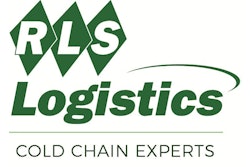
The U.S. foodservice industry has a promising future. Americans are increasingly opting for immediate consumption food, which is why traditional food retailers have introduced prepared meals, blurring the lines between retail and foodservice. The National Restaurant Association pegs 2015 foodservice sales to post 3.8-percent 1-year gain, surpassing that of the previous year.
But winning that future calls for a supply chain that can meet consumer needs for more diverse products. In a way that allows foodservice providers to meet stricter safety rules. And in the face of rising commodity costs, higher transportation expenses, increasing labor costs and the need for more sophisticated management tools.
Not a small order.
In an effort to understand how well the foodservice supply chain is equipped to handle these challenges, Downers Grove, Ill.-based HAVI Global Solutions (HGS) and Chicago-based Technomic Inc. partnered on a survey to assess the state of the U.S. foodservice supply chain. From the results of this survey, researchers assessed the supply chains’ capabilities and developed metrics to allow individual supply chain companies – operators, distributors and manufacturers – to improve their performance in today’s rapidly changing industry.
The survey did not address the supply chain in a vacuum; researchers questioned foodservice companies on all business concerns. The top three business concerns were cost related; commodity cost pressure, commodity price volatility and customer price sensitivity. Logistics ranked number four. Logistics, however, is the first cost foodservice companies can exert any control over.
More than three-quarters of all chains said “increasing cost/pressure in logistics and transportation” has been a significant challenge for the last three years. Nearly a third of all chains across parameters of size and supply-chain maturity reported higher distribution costs.
The study noted that oil price declines will help in at least the short term. But there are other logistics costs to consider. These include wage inflation caused by driver shortages, shortfalls in rail capacity, and degrading infrastructure.
When asked to list their major business challenges, supply chain executives cited the ability to predict the impact of new menu introductions, price changes and limited time offers (LTOs). The companies with less mature supply chains found these challenges more difficult.
The Supply Chain As A Competitive Tool
One of the survey’s key findings is that foodservice companies with more mature supply chains tend to have greater topline performance. And while this finding won’t surprise anyone, it comes with a caveat.
Companies active in the fast food segment – even those with “mature” supply chains – were unable to deliver high performance. This is due to the challenges of heightened competition, changing customer preferences, geographical saturation and demographic changes.
Younger chains, many of them in the fast-casual sector, are among the fastest growing despite having lesser supply chain capabilities. This is because consumer demand for their offerings is so strong.
Hence, while having a mature supply chain is important to achieve top line results, it does not guarantee topline results. Changing market conditions also have a bearing on performance.
Collaboration Key Among Supply Chain Players
Another key finding is that collaboration among the supply-chain, culinary and marketing departments is becoming more critical to improving performance. Key elements are: collaboration culture and frameworks; forecasting sophistication; and near-real-time visibility into changing conditions.
The HAVI study identified five levels of supply chain maturity. As companies move through the five stages, their processes integrate more. And as collaboration increases—with internal functions like marketing and finance and with external partners such as suppliers and distributors—the supply chain evolves to encompass more capabilities.
The largest and most mature supply chains have greater buying power and tend to have more capable supply-chain organizations, the study notes, “but it is not at all certain that these chains are agile enough to meet the demands of the next decade. While the big chains’ supply-chain managers can check off an impressive list of capabilities, we’re seeing a paradigm shift in the definition of supply-chain maturity; the drive to success is no longer focused on cost, but on collaboration, agility and adaptability.”
The Hale Group, a Danvers, Mass.-based foodservice consultancy, honed in on the importance of collaboration within the foodservice supply chain in a recent report to the International Foodservice Manufacturers Association.
“While the operator has the primary responsibility for creation of value and demand, the successful foodservice operators recognize they do not and cannot have all the insights, innovation, knowledge and know–how to operate successfully without strong, knowledgeable supply-chain partners,” the report notes. “So the foodservice industry recognizes the best practice is a more collaborative, co-creation model. Unless foodservice adopts this best practice –collaborative, co-creation model – it will present a sub-optimal value proposition to consumers of the foodservice occasion as the preferred choice.”
Supply Chain Partners Respond
Food Logistics uncovered several recent examples of collaboration among food supply chain partners.
Butterball, a Garner, N.C.-based turkey producer, has been preparing pallets in its own warehouses so foodservice customers can cross dock. “We’re doing more and more DSD preparation for the foodservice carrier,” says Daniel DiGrazio, senior director of logistics. This includes placing completed barcodes on the pallets before they leave Butterball’s facilities.
Nicholas & Co., the Salt Lake City, Utah-based broadline foodservice distributor, has been stacking raw chicken in dedicated pallets rather than mixed pallets for some customer as an added safety measure for foodservice customers, says Angel Garcia, director operations and building facilities. This exceeds the required HACCP protocol. “You’re basically isolating that product,” Garcia says.
“The best in class collaborate with all supply chain partners,” says Cullen Andrews, vice president of national accounts at Dot Foods, Inc. the Mt. Sterling, Ill.-based food redistributor which consolidates less-than-truckload (LTL) quantities for distributors. “This includes manufacturers, redistributors, and distributors. When they take a collaborative approach, there tends to be more information shared among business partners, which leads to a reduction in waste (cost) and better service when the product is at the right place at the right time at the right cost. In general it is a more quality supply chain.”
John Gaudet, vice president of business development at RLS Logistics, the Newfield, N.J.-based 3PL provider, has noticed one of the larger broadliners has centralized its transportation decision making. In the past, different operating centers directed the deliveries. The centralized approach makes the job easier for the 3PL since they no longer have to work with multiple decision makers. The end result: fewer deliveries systemwide.
“The one (operating center) didn’t know what the other was doing because they were all closed off from one another,” he says. “It’s now being managed by a logistics team to drive efficiencies into the supply chain.”
Gaudet has also noticed that some distributors are consolidating manufacturers’ deliveries, which also improves supply chain efficiency.
A better integrated supply chain can also help operators respond to the long-standing challenge of new product introductions.
“We are involved all the time with LTOs (limited time offers),” says Dot Foods’ Cullen. “We collaborate with the national account operator, distributors, and suppliers to make sure everyone is on the same page on supply chain execution of the launch based on the forecast.”
Centralized Buying Continues To Grow
Bill Hale, CEO of the Hale Group, points to centralization of operator purchasing power as one of the biggest factors facing today’s supply chain. Centralized buying power can favor the supply chains with greater resources, he says, but only if those supply chains utilize their resources. Both Hale and HGS agree the level of supply chain maturity does not depend on an organization’s size.
Within the total foodservice industry, Hale’s research indicates purchasing has been less centralized in commercial foodservice than in other segments such as lodging, institutional, government, health care and business and industry.
However, centralized purchasing continues to grow for all segments, and by 2020, Hale claims it will account for 79 percent of all foodservice buying, a 10-point gain over where it stands today.
Centralized buying entities include chain operator buying organizations, large independent operators, institutions, government, and group purchasing organizations. (GPOs). Among these, chain organizations represent half of volume with GPOs account for slightly less than half.
As operator consolidation continues, purchasing decisions move further away from the point of service delivery. This raises the bar for supply chain efficiency.
“The distributor has less influence on what is to be purchased,” says Hale. “This decision is made by an entity outside the local market. ‘I as a distributor’ am becoming more of a logistics provider than a wholesaler.”
But Hale is quick to note that this does not lessen the distributor’s role in the supply chain.
As distribution costs rise, the need to deliver this function efficiently becomes more important.
GPOs Continue To Play A Role
GPOs – buying groups that represent operators but are independent entities – have been a topic of debate since they began making a foray into the commercial foodservice channel two decades ago.
“They (the GPOs) are an agent for change in the channel, and they are growing,” Hale says.
Food companies interviewed by Food Logistics gave mixed views on the level of GPO activity in the commercial foodservice segment. Most do not think their role has increased significantly in recent years. The International Foodservice Distributors Association cited a study indicating they are growing in low single digits.
Because GPOs bring another player to the supply chain, they increase the importance of collaboration within the supply chain.
While some supply chain executives believe fewer players make for a more efficient supply chain, others caution against generalizations. Redistributors that consolidate LTL shipments into full truckloads – an additional supply chain player – have grown over the years because of the efficiencies they bring to the supply chain.
Any centralized buying group, be it a GPO or chain-operated buying organization, exerts a certain amount of control over the distributor and can influence their margin on the business. But at the same time, Hale says the centralized buying organization brings more predictability to the distributor.
By working together, all parties can improve a supply chain’s efficiency, to everyone’s benefit. Scott Saunders, HGS senior vice president of supply chain integration, points to instances where either a distributor or a GPO identified redundant SKUs and removed cost from the supply chain.
Foodservice manufacturers offered mixed views about selling to GPOs.
Some companies, like Butterball, find GPOs useful in reaching all the customers they want to reach. “The foodservice operators are not side stepping the distributors,” says Butterball’s DiGrazio. “We want to see Butterball product everywhere.”
Some food manufacturers who did not want to be quoted for publication said GPOs would offer the group discounts to foodservice customers who were not party to the contract.
Lacas Coffee Co., a Pennsauken, N.J.-based roaster specializing in specialty coffee for restaurants and offices nationwide, finds GPOs helpful for his “direct” sales accounts. The company works with the Delaware Valley Purchasing Group in Bellawr, N.J. But for gaining high volume contracts, selling to distributors is more effective.
Jonathan Del Re, owner of Lacas Coffee Co., says he has more control over his relations with customers he sells to directly through the GPO. But distributors bring him more volume and more customers. He says it is difficult to say which arrangement is more profitable.
To Hale’s point, the distributor still plays a role in the GPO model. Foodservice operator members of the Delaware Valley Purchasing Group send their orders to Sysco Corp., the GPO’s foodservice distributor member, for delivery. They can also buy Sysco products that are not under contract with the GPO at Sysco’s regular price.
Hermel Foodservice, a broadliner in Mankato, Minn. serving southern Minnesota, is not large enough to service most GPO service areas, says Ross Nelson, the company foodservice buyer. The company primarily serves independent establishments who don’t belong to GPOs. Some of the schools the company sells to belong to GPOs.
One of the more innovative supply chain models to emerge has been the National DCP, LLC (NDCP), a nationwide supply chain management organization for Dunkin’ Donut franchisees, says Hale. (See sidebar, page XX.) NDCP acts as a buying organization that manages its members’ supply chain.
Redistributors Continue To Play A Role
Redistributors, meanwhile, continue to play an important role in the supply chain.
The growth of ethnic, organic, non-GMO, gluten-free and other specialty SKUs makes redistribution an important resource for all supply chain stakeholders.
“It is important for operators and distributors to stay on trend, and as consumers are asking for healthier foods and ethnic foods, as an example, those categories can be difficult to source which create supply chain challenges to make them available in the market,” says Dot Foods’ Andews. “This is one reason we have dedicated more resources to expand our offering in these categories. If we carry an item, it is available on a weekly basis with no minimums to our 4,000-plus distributors and subsequently their customers.”
Lemont, Ill.-based Consolidated Distribution Corp. consolidates LTL shipments into full truckloads from warehouses in Chicago, Dallas, Texas and Atlanta, Ga. Focusing on slow moving products, the company handles ambient and frozen item since they have longer shelf lives, says Thomas Geza Varga, director of supply chain logistics. The company manages over 1,800 SKUs.
One of the greatest benefits foodservice distributors gain from redistributors is not tying up excess inventory, Varga says. This explains why his company has set new sales records every year since 2008 despite a recession.
Lineage Logistics, the Irvine, Calif.-based 3PL, has a food redistribution operation with dedicated DCs. The service saves foodservice operators and retailers the inefficiencies of using LTL shipments, reduces administrative work, reduces waste and lessens dock congestion.
“We can consolidate that product at our redistribution facilities and send it to multiple destinations,” says Tim Smith, executive vice president of sales and business development. By consolidating product, Lineage can deliver slower moving products with a cost effective solution that reduces inventory held in the supply chain. This is especially helpful with limited time offerings and specialty products. “We can move smaller quantity items more efficiently because they’re consolidated with faster moving items.”
The traditional foodservice and retail distributors also benefit from the redistributor since like the operator, they’re not warehousing slow-moving SKUs. “We’re not bypassing the distributor,” says Smith. “We’re giving them the product in a more efficient manner.”
A key difference between the redistribution service and the consolidated deliveries Lineage does for retail customers is that under redistribution, it actually takes ownership of the product.
Lineage Logistics’ redistribution business is somewhat unique in that it focuses on refrigerated and frozen products, Smith says. “Almost exclusively, it’s a temperature-controlled program,” he says.
Investment Needed In Tools And Training
One of the challenges supply chains face is prioritizing investment in new tools, human resources and training.
Mark Allen, executive director of the IFDA, notes that the driver shortage remains one of the biggest challenge the industry faces, along with the need for executive training and the need for skills to enable companies to utilize new tools.
As supply chains gain access to increasing amounts of data—including supplier, distributor and restaurant point-of-sale (POS) data—they can use the information for better planning.
The foodservice supply chain faces the need to change some processes to meet new market realities. New players are emerging as a result of these changes, but established players are also responding.
Dunkin’ Donuts Buying Group Ties Product Sourcing To Supply Chain
Duluth, Ga.-based National DCP, LLC (NDCP), a nationwide supply chain management organization for Dunkin’ Donut franchisees, provides an example of how an established operator sourcing group for a mature brand enacted organizational changes to improve efficiencies and become more profitable. The organizational changes allowed the company to invest in technology to improve its supply chain.
NDCP formed in 2012 following the merger of five different operating companies to support Dunkin’ Donuts’ expansion plans.
By incorporating product sourcing into the mix, NDCP has been able to deploy a “farm to fork” supply chain that has saved members more than $200 million in product costs since the company formed, according to CEO Scott Carter.
By integrating product sourcing, NDCP has improved profitability and invested in technology that has provided more value to customers. For a mature brand, this has been especially important, Carter says.
Without the sourcing function, a distribution company is limited in its ability to improve its efficiencies and provide value-added services, Carter says. Distribution companies typically are not involved in product sourcing and can constantly struggle to take cost out of their operations. “There’s only so far you can go before you run into the investment barrier,” he says.
“Distribution becomes a secondary thought, so you end up with food costs that are elevated,” Carter says. “I don’t see how the system can remain healthy without attaching sourcing to it. When brands have sourcing and the distributor doesn’t participate, the brand sees the distributor as a commodity.”
NDCP has improved the company’s food cost by 40 percent in some cases and delivering the same improvement in profit margin, Carter says.
“We create a little bit of healthy tension between marketing and supply,” he says. “Marketing calls the shots and supply has to go fulfill the request.”
A more efficient supply chain has also played an important role in the company’s improved performance. “Project Freshstart” is a technology and business process transformation initiative that has involved changing all of NDCP’s systems, technology infrastructure and business processes in short time frame. Using a new online ordering system and back-end functions, the project has improved website functionality, invoice accessibility, product availability and inventory management. One noticeable result was improved on-time deliveries.
Publications and research organizations such as Computerworld, SAP Insider and Gartner Research have recognized Project Freshstart’s success.
Uniform Data Improves End-To-End Supply Chain Visibility
The quality of supply chain’s data is crucial to its ability to operate efficiently. Quality includes accuracy, timeliness and uniformity across the supply chain. These factors improve the speed and accuracy in traceability of information throughout the supply chain.
Many foodservice supply chains are focusing on uniform data networks, says Eric Pfeiffer, HGS senior director of North American supply chain integration. There are subscription data systems such as GS1 as well as independent systems companies are using.
Dot Foods, the Mt. Sterling, Ill.-based redistributor, has taken a leadership role with its Dot Expressway, which uses the GS1 Global Data Synchronization Network (GDSN). Suppliers provide item attributes including case dimensions and weight, marketing details and nutritional information to the Expressway through the GDSN, giving distributors access to that information. Core item data is currently available for 70 percent of Dot’s product inventory. Seventy percent of the items with published core item attributes also have marketing and nutritional data accessible.
“Time is so valuable in the foodservice industry, and this (Dot Expressway) resource allows us to get immediate answers for our customers,” says Dana Krajacic, sales training manager at Dupo, Ill.-based Kuna Foodservice. “Having this data available at any time without having to rely on someone else to provide the information is extremely conducive to a sales representative’s lifestyle.”
UniPro Foodservice, the nation’s largest broadline foodservice distributor co-op, has created its Master Data Management (MDM) Portal, allowing food manufacturers to electronically publish core attributes and marketing and nutritional attributes. All data synchronizes with the MDM Portal via the GDSN, allowing members to access product information and images.
Increasing government regulations also bring the need for more efficient data management.
Because the new food safety rules will end-to-end product traceability throughout the supply chain, companies will need to deploy warehouse management systems (WMS), says Scott Saunders, HGS senior vice president of supply chain integration.
Nicholas & Co., the Salt Lake City, Utah-based foodservice distributor, sees traceability as one of the main benefits of deploying the GS1 data system, says Angel Garcia, director of operations and building facilities. Traceability is important because of safety considerations, he says.
Distributors Take A Cue From Operators With MobileApps
Foodservice distributors are taking a cue from national foodservice chains – such as McDonald’s,Subway, Taco Bell, and Chick-fil-A – and are using mobile apps to make ordering more convenient for customers.
A mobile-enabled customer relationship management application, NCR Power Mobile, will allow South Bend, Ind.-based Stanz Foodservice’s customers to easily place orders using their own mobile devices and track the entire ordering process while on the go. The app works on any mobile operating system and any tablet or smartphone device, and can use the device’s native tools such as barcode scanning and image capture for expanded functionality.
NCR Power Mobile gives Stanz Foodservice customers and sales representatives and consultants improved visibility at every stage of the ordering process with real-time status updates on product data, promotions, new item lines, and the ability to track order status from point of entry through delivery and payment. It integrates with other NCR enterprise software already in use at Stanz Foodservice.
“It gives them (customers) access to our data whenever they need it,” says Stephen Whitaker, a training specialist for the mobile app.
For More information:
Consolidated Distribution Corp., cdcsupply.com
The Hale Group, halegroup.com
HAVI Global Solutions, havigs.com
International Foodservice Distributors Association, ifdaonline.org
International Foodservice Manufacturers Association, ifmaworld.com
Lineage Logistics, lineagelogistics.com
National Restaurant Association, restaurant.org
RLS Logistics, rlslogistics.com
Technomic, technomic.com





















